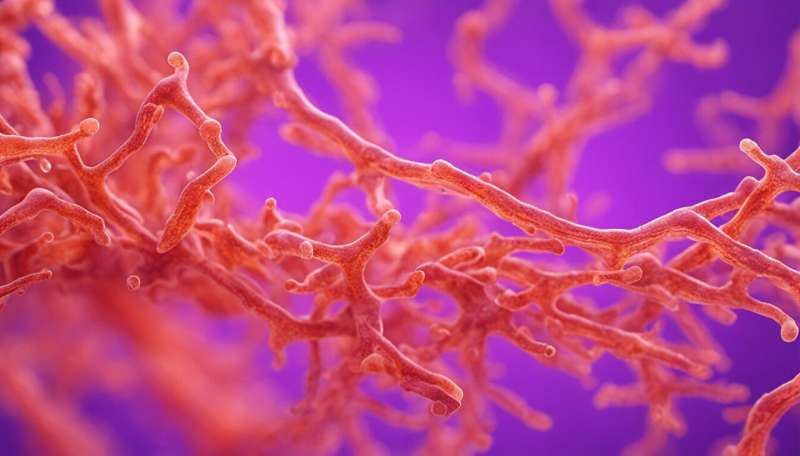Stem cells derived from different types of fat express different cell-surface markers

Mesenchymal stem cells (MSCs) have a natural ability to differentiate into various cell types, such as muscle, cartilage and bone. They can be classified according to their source and include adipose-derived stem cells (ASCs) and bone marrow-derived stem cells (BMSCs). ASCs, in particular, hold tremendous potential for tissue engineering and regenerative medicine because of their relatively high abundance and ease of isolation.
Shigeki Sugii at the A*STAR Singapore Bioimaging Consortium and co-workers have now isolated ASCs from two different sources of fat: subcutaneous fat found underneath the skin and visceral fat from inside the abdominal cavity. The team showed that ASCs derived from subcutaneous fat express cell-surface markers that differ from those derived from visceral fat. The finding has implications for determining the origins of ASCs and the roles of their different subtypes in metabolism-related conditions, such as obesity, and diseases such as soft tissue tumors.
Stem cells, like all other cells, express molecules at their surface that are recognized by the body's immune system. Like a fingerprint, the expression profile of these cell-surface markers is unique to each stem cell type. Scientists already know that MSCs express the cell-surface markers CD73, CD90 and CD105 but not CD14, CD19, CD34 and CD45. Recent studies have also shown that while ASCs express CD36 but not CD106, the opposite is true for BMSCs. Thus, MSCs derived from different tissues express different cell-surface markers, providing a valuable tool for determining the origins of MSCs.
Sugii and co-workers therefore proposed that ASCs derived from different types of fat may also express different cell-surface markers. To investigate this, they extracted subcutaneous and visceral fat from 12 obese patients, as well as normal and obese mice. After isolating ASCs from the fat, the team analyzed the expression profiles of over 240 cell surface markers for each sample. Their analysis revealed a high level of CD10 expression in ASCs derived from subcutaneous fat compared to ASCs derived from visceral fat. In addition, they detected a high level of CD200 expression in ASCs derived from visceral fat compared to those derived from subcutaneous fat.
The researchers also discovered that while CD10-rich ASCs from subcutaneous fat differentiate better than their CD10-deficient counterparts, CD200-deficient ASCs from visceral fat differentiate better than their CD200-rich counterparts.
"Our results suggest that CD10 and CD200 are markers of high and low adipogenic capacities," says Sugii. "Therefore CD10 and CD200 are biomarkers as well as indicators of adipogenic potentials for use in high-throughput drug-screening systems."
More information: Ong, W. K., Tan, C. S., Chan, K. L., Goesantoso, G. G., Chan, X. H. D. et al. "Identification of specific cell-surface markers of adipose-derived stem cells from subcutaneous and visceral fat depots." Stem Cell Reports 2, 172–179 (2014). dx.doi.org/10.1016/j.stemcr.2014.01.002

















